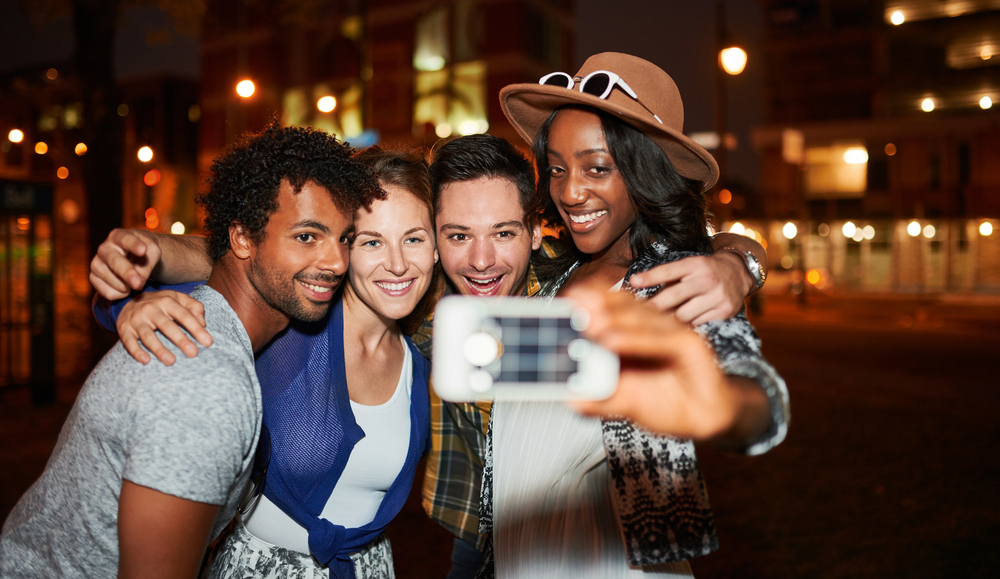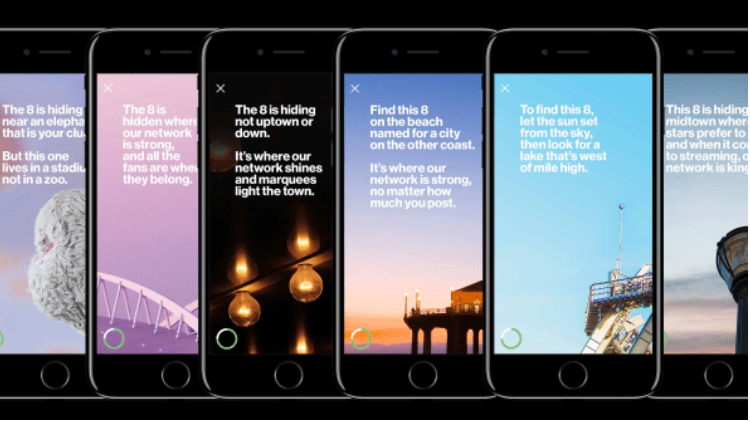
Experiential Marketing and Connecting with your Audience
I remember being in college when Facebook launched. Back when it was exclusive for just college kids, and was only at major universities.
Now over a billion people log into Facebook everyday, including about 80% of Americans. Social networks have sprouted like weeds and 42% of the world population uses social media, and 53% uses the Internet.
The Internet and social media are changing out world, and the way people interact with brands are changing, too. What they expect from brands is more now than ever before. Generations like Millennials and their younger counterparts are making up more of the spending, and influencing consumer behaviors.
As millennials account for more and more spending, companies will need to tailor their marketing to this group.
Millennials currently spend on the order of $600 billion every year. That number grows to an estimated $1.4 trillion in 2020.
What do Millennials and their younger counterparts look for in businesses?
Experiences, connectedness, and value-based selling.
Experiential Marketing
Experiential Marketing definition: This marketing type, also called engagement marketing, encourages consumers to engage in the development and proliferation of a brand.
Why is Experiential Marketing so popular? Millennials have grown up in a hyper-connected world, with the Internet and social media, smartphones and smart-everything being part of their daily life.
As a result, as consumers they expect a much more immersive experience from brands than any generation before them, who were used to experiencing brands from a more detached perspective, such as TV ads or billboards.
Big brands like Google, Verizon, and Nike are all crafting creative experiential marketing campaigns.
Verizon partnered with Snapchat to create an augmented reality treasure hunt. Snapchat users in select cities were given a choice to download the scavenger hunt app and then follow the clues, taking participants to different locations around their city. At the end of the hunt is a giant ‘8’. "Take a snap with the augmented reality ‘8’, send it to Verizon and maybe win a new phone."
This encourages customer interaction in a fun, rewarding way that builds the brand and makes the customer feel part of the brand's growth and the launch of the newest product.
How can you use Experiential Marketing for your business?
Stay true to your brand.
Don’t deviate from who you are as a business to jump on a marketing trend bandwagon. As with any marketing effort, it should only serve to reinforce your brand identify and build the persona people have come to expect.
To market the new Glenfiddich Experimental Series, the whiskey company set up a tasting event in a London bar where customers can log into an app, answer questions about themselves, and then are linked with a drink that matches their personality profile. This is all within a very suave, sophisticated London setting, staying true to the brand’s own character.
Create an experience where your target market is.
In the example above, the whiskey company set up in a bar, because that is where people who drink alcohol tend to hang out.
Whatever experience you craft for your consumers, make sure it is where they will be.
For example, an auto dealership might set up a virtual reality driving booth at a car show, allowing car connoisseurs to test out their vehicle’s accident avoidance features in a virtual setting. People attending this event are more likely to be early adapters of car technology and will be more open to new car concepts and trying out new features.
Make the experience fun.
Like Verizon’s scavenger hunt, or Google’s pop up donut shops to promote their Home Mini (watch out Amazon Echo), these experiences focus on fun. If you want people to take time out of their busy schedule to try your experience, you need to make it worth their time.
Make the experience about the consumer.
In our whiskey example, Glenfiddich asked people question about themselves to pair them with the perfect whisky. We all like to feel special, and feel like a product is tailored for our specific wants and desires.
The more you can focus the experience on the individual consumer, the more likely they are to try it and have a positive brand experience.
Let’s create an example for a small business.
Perhaps you run a local bakery. Create a tasting event at a local craft show or festival where you ask people questions about themselves to try and guess their favorite flavor of cupcake. This experience is where your consumers will be (local people), it is fun (who doesn’t like to taste cupcakes), and it is tailored to the consumer (asking them questions, focusing on them).
Try creating your own Experiential Marketing and then blog about it, share it on social media, and get as much traction as possible.
Don’t forget to encourage people to share their own content surrounding the experience by creating a hashtag or other way to cross from the real world to the virtual world.
This takes us to our next marketing to reach the new generations:
Connectedness.
Consumers today expect to be very connected to brands on levels never possible in the past.
Your challenge as a company is connecting your brand, and your physical storefront (if you have one) with the virtual world. Younger generations, like Millennials, are spending more and more time in the virtual world.
How can you create this connectedness?
Have an immersive virtual presence.
Create a business persona online.
Your business needs a personality. The saying “People buy from people, not brands” is just as true today as it was years ago. Using influencers is one way to give your brand a personality. Big brands use celebrities to build a persona for their brand and connect easily with their audience.
For many businesses, celebrities are a little outside of budget. But you can still find influencers in your industry to help better connect with your target audience. Popular bloggers, YouTube celebrities, or experts in your industry are all possibly influencers.
Once you’ve created a company persona and reached out to influencers to help solidify it, make this persona a central part of your brand development. Create a persona that will speak to your target audience.
If a company’s target audience is small business owners, their persona should look different than a company trying to target teens.
Consider what makes your business unique. Is your business fun? Healthy? Focused on doing good?
Let’s use Mountain Dew as an example. What do you think of when I mention their brand? People snowboarding off mountains?
Exciting, thrilling, adventurous?
They use video, images, and the edgy logo itself to set up a complete brand identity that their target audience will quickly relate to.
Check out the example of an influencer they’ve chosen: Famous race car driver, Dale Earnhardt Jr.
Having a strong personality online will help you better connect with your target audience.
Once you’ve created a brand persona, share it!
Be active online wherever it makes sense for your business. Using the Mountain Dew example again, they use the video sharing site Vimeo to post active and exciting videos.
Decide what makes the most sense for your business. Perhaps blogging is your niche to connecting with your audience. Maybe Instagram or Snapchat is where your audience spends most of its time.
Looking for an older or more professional audience? You might want to invest your time in LinkedIn or Facebook.
Now that you’ve given your audience a great experience and better connected with them, seal the deal with value-based selling.
Value-based Selling.
Value-based selling is simply finding what is special about your product or service and properly communicating that to your audience.
You may have heard the term Unique Selling Point or USP. This is what makes your business stand out. What problem are you solving for your customer, and how are you doing it differently / better than your competition?
Below is an example of Uber's value selling. They are showing how Uber is cleaner, more friendly, more comfortable, and faster than the competition. They use easy to understand graphics to quickly communicate their USP.
Two keys to keep in mind when communicating your value to your audience:
Make your USP about the customer.
Instead of focusing on the great benefits your product comes with or how awesome your company is, be sure you’re focusing on what your product solves for the customer.
To be perfectly blunt, no one really cares about your business. They care about what your business can do for them.
By understanding what your audience needs and telling them how your business is going to fill that need better than the competition, you will make more sales and be able to get more for your product.
Keep your USP simple.
As industry professionals, it can be easy to assume your audience knows as much as you do about it. This is often not the case. When communicating the USP of your product or service, be sure to use language they understand. Avoid industry buzz words or jargon that your audience may not be as familiar with as you are.
You should also be able to communicate value quickly, without long explanations. Use graphics to explain more complex concepts, if necessary. Don’t make your audience think too hard. Make sure you are communicating your value quickly and simply.
As marketing continues to evolve with the advent of new developments on the Internet and the world around us, staying relevant is crucial to being successful. It isn’t enough to just create content and post to social media.
If you want to succeed, give your customers a full experience, connect with them, and properly communicate what makes you stand out.







